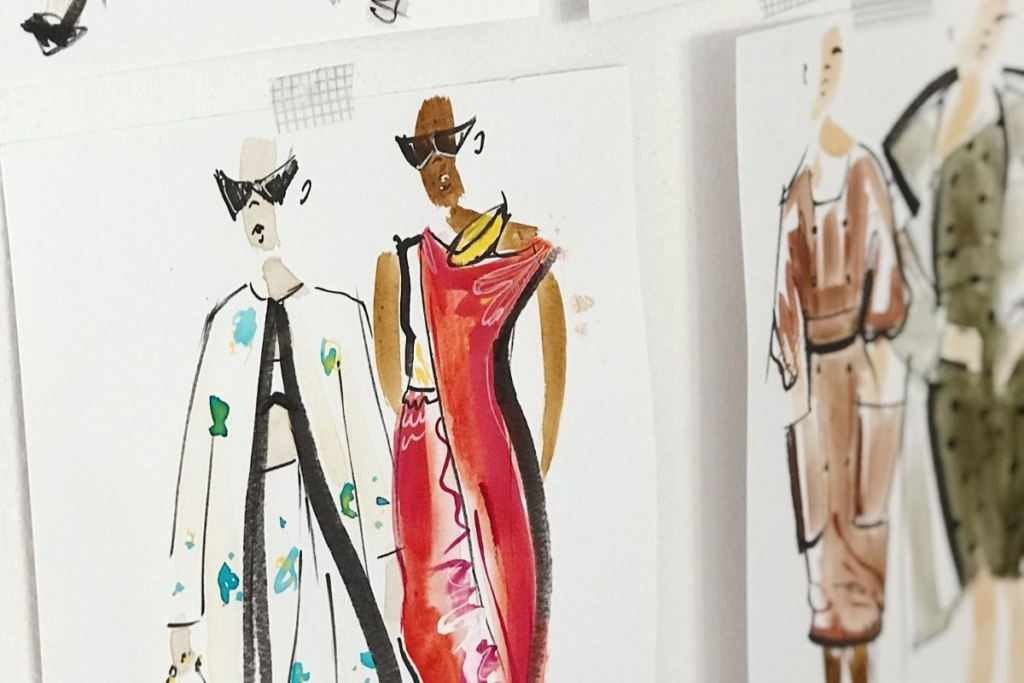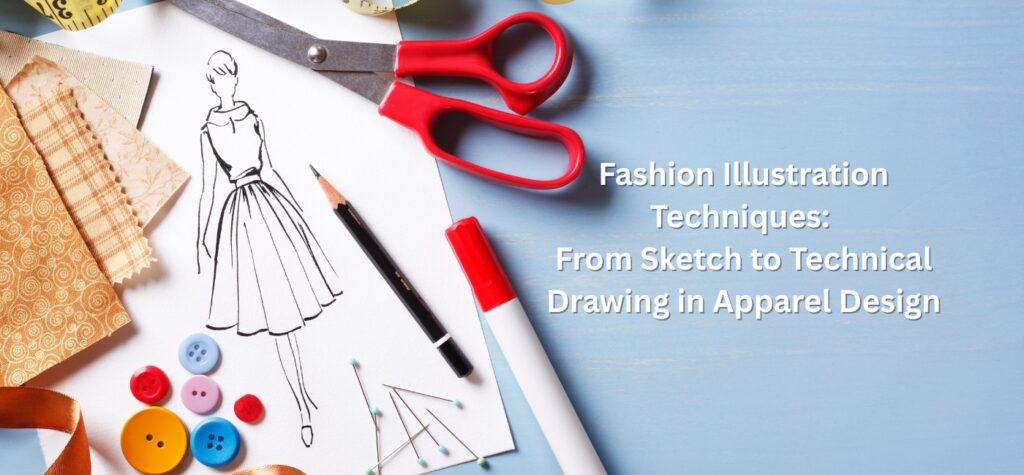1. Fashion Illustrations: The Art of Storytelling
Fashion sketches are the first visual translation of a designer’s vision. Beyond basic figure drawing, professionals consider:
Key Principles
- Proportion & Anatomy: While the 8-head ratio is standard, designers adjust for exaggerated silhouettes (e.g., avant-garde) or commercial wear (e.g., petite sizing).
- Fabric Rendering Techniques:
- Watercolor: Ideal for sheer fabrics like chiffon.
- Markers: Capture the opacity of wool or denim.
- Digital Brushes (e.g., Procreate): Simulate textures like sequins or knitwear.
- Dynamic Poses:
- Walking Pose: Highlights drapery in skirts or coats.
- Asymmetrical Stance: Emphasizes tailored jackets or asymmetrical hemlines.
Industry Applications

- Portfolio Presentations: High-end brands prioritize painterly illustrations for mood boards.
- Fast Fashion: Simplified sketches with bold colors speed up design approvals.
2. Technical Flat Drawings: The Blueprint of Design
Flat sketches are the universal language between designers and manufacturers. Critical elements include:
Anatomy of a Perfect Flat Sketch

- Precision Lines: Use 0.5pt pen strokes for seams, dashed lines for hidden construction (e.g., boning in corsets).
- Scale & Grading: Include 1:4 scale mini-flats for quick reference during fittings.
- Callouts: Label notches, grainlines, and stitch types (e.g., French seams for luxury finishes).
Digital Workflow
- CAD Software (e.g., Adobe Illustrator, CLO3D):
- Vector-Based Flats: Editable for size grading.
- 3D Virtual Sampling: Reduces physical prototyping costs.
3. Design Specifications: Bridging Creativity and Production
Annotations transform sketches into executable designs. A professional spec sheet includes:
Essential Components
- Design Narrative:
- Example: “A minimalist capsule collection using deadstock cotton, inspired by Bauhaus geometry.”
- Material Breakdown:
- Fabric Swatches: Attach physical samples or Pantone codes.
- Sustainability Notes: “OEKO-TEX certified dyes, biodegradable buttons.”
- Construction Details:
- Stitch Density (e.g., 12 stitches per inch for denim).
- Hardware Specifications (e.g., YKK #5 nylon zipper).
Collaboration with Technical Teams
- Pattern Makers: Provide DXF files for laser-cut patterns.
- Sample Makers: Annotate tolerance levels (e.g., “+/- 0.3cm for pleat alignment”).
4. Beyond Basics: Advanced Practices for Designers
Digital Integration
- AI Tools: MidJourney for rapid concept generation.
- Blockchain: Track sustainable material sourcing (e.g., Ecoalf’s recycled fabrics).
Sustainability in Design Documentation
- Zero-Waste Patterns: Notate pattern efficiency (e.g., “Nest layouts to minimize offcuts”).
- Circular Design: Specify disassembly instructions for recycling.
Conclusion
Effective fashion design communication requires balancing creativity with technical rigor. Mastering illustrations, flats, and specs ensures seamless transitions from sketch to sample—and ultimately, to a commercially viable garment.

